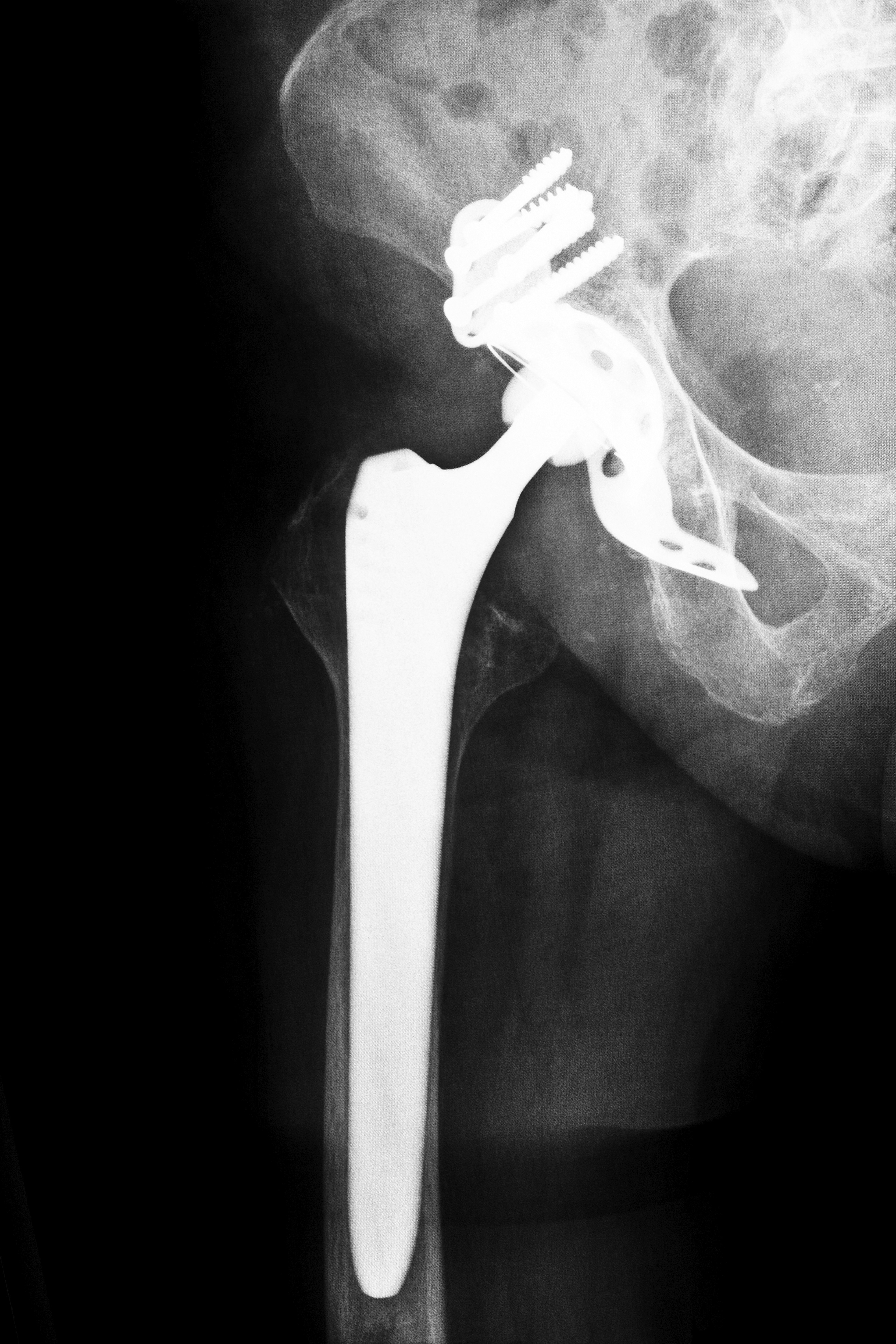Pain after hip replacement problems are a growing concern among physicians as younger patients are undergoing hip replacement surgeries. A cause of pain after hip replacement can be Osteolysis. This occurs when particles worn off of a hip replacement device triggers an autoimmune reaction that causes resorption of living bone tissue that leads bones to become thin and weak. 
Types of Hip Implants
There are three types of hip replacement surgeries performed on patients today. These include:
- Total hip replacement – the entire hip joint including the ball, socket and femoral stem
- Partial hip replacement – the ball only
- Hip Resurfacing – the cup is replaced while the ball is reshaped and covered with a metal cap
Each type of implant is performed to correct hip problems that include arthritis and damage after hip fractures. In the past the surgeries were performed on patients who were older. However, advances in technology have made hip replacement one of the fastest growing surgeries, and many of the procedures are performed on patients under the age of 55.
Younger Patient Complications
Because younger patients are more active than older patients, the risk of developing osteolysis and pain after hip replacement complications increases. The hip ball and joint rub against each other naturally as people move around. Because hip replacement parts are made of metal, particles can be released from the devices, entering the blood stream and tissue surrounding the replacement hip. This causes the device to loosen over time and could lead a patient to need painful revision surgery to replace all or portions of the hip replacement device. Patients have filed osteolysis pain after hip replacement lawsuits because of the pain they have endured after such surgeries, as revision surgery is more painful and requires longer recuperation than the original surgery.
Diagnosis of Osteolysis Pain After Hip Replacement
Osteolysis has no symptoms and pain occurs when the tissue surrounding the hip replacement is damaged or when bones break for no apparent reason. A doctor will order a bone biopsy, which can be very painful, and X-rays will be taken to determine the extent of bone damage. Although medication may reduce pain and inflammation, surgery is often required to repair breaks or replace the hip replacement device. Because the testing and treatments are painful and invasive, you may consider discussing your injuries with an attorney who can advise you on the steps to take throughout your treatment
Do You Suffer from Osteolysis? You May Qualify for a Monetary Compensation
Osteolysis pain after hip replacement may qualify you to pursue a claim. Attorney Group can help you identify if you have a claim with no out-of-pocket costs due from you. If you have a claim, Attorney Group can refer you to an affiliated attorney who can file a lawsuit on your behalf.






